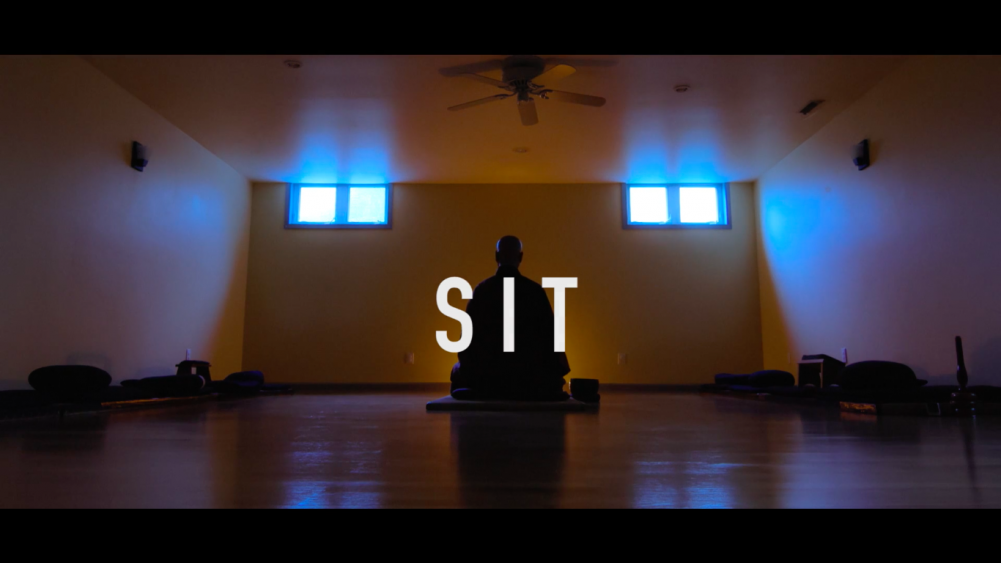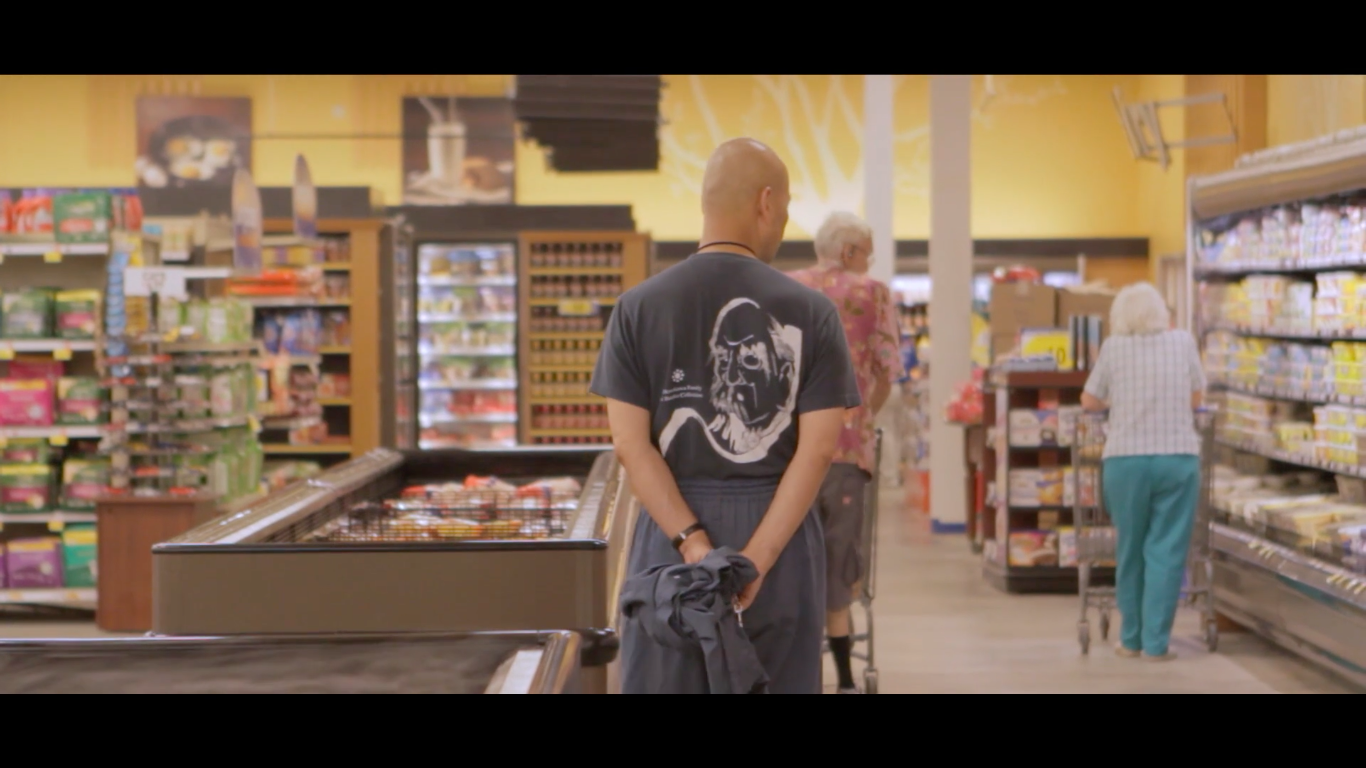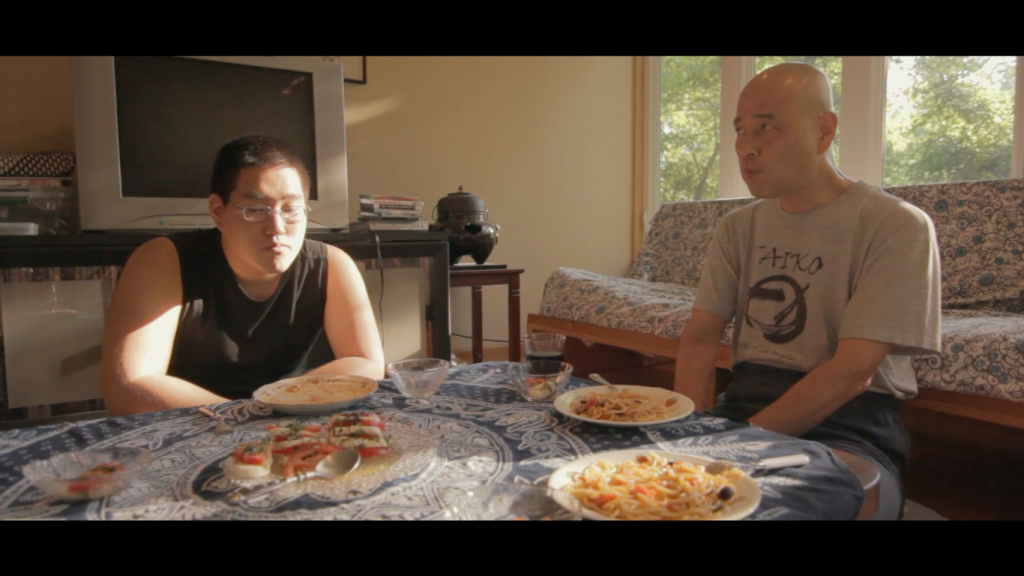Yoko Okumura was born in a Buddhist temple in Japan and moved to the U.S. as a child. Her father, Shohaku Okumura, is the abbot of Sanshin Zen Community in Bloomington, Indiana, and a respected translator of Eihei Dogen, who founded the Soto Zen school in the 13th century.
But it wasn’t until Yoko Okumura, 28, started filming her family that they started talking about the Buddhist tenets that tie them together.
Okumura is a Los Angeles-based filmmaker, producer, director, and performer whose work has appeared at numerous festivals. Her film Kimi Kabuki won first place at the 2014 Director’s Guild of America Student Film Awards for the western region Asian American category.
SIT, a short documentary about Okumura’s family, premiers today on our blog, Trike Daily. Okumura recently spoke with Tricycle about the film, how it has grown and evolved over nearly 10 years of shooting, and what she hopes viewers take away from it.

You put yourself in your own work in other films. Was your family already used to you filming them, or did it take some convincing?
Because it’s been such a gradual process, they didn’t really know the subject matter, other than that it was about them, until it was finished. I don’t know if they ever had a moment to say yes or no! But they’ve been supportive through the whole process and in humoring me. I’ve had a video camera ever since I was little, so they’re used to that.
This project went through several iterations. I originally started shooting when I was an undergrad at Cal Arts in film school in 2007, so I’ve been shooting my family in one form or another for nearly 10 years now. This version of SIT has a lot more production value and took about four years of shooting and editing.
How did the film evolve throughout the filming process?
Initially it was a quasi-narrative documentary hybrid that I was doing during college, but then it became very specifically about my Dad and Buddhism. It was supposed to be about him and how he sits and what that means in the context of sitting in America. We started shooting that movie in 2012 and realized after interviewing my brother that there was a much more compelling story comparing the two of them together.
Your brother mentions in the film that he doesn’t sit zazen. Do you have a practice?
I have. I don’t regularly practice, but I have sat a couple times at the San Francisco Zen Center when I was filming my Dad. I definitely don’t call myself practicing compared to my parents—nothing like what they do. But I’ve always called myself a philosophical Buddhist because being raised by two Buddhists, you can’t help but see life through that perspective and through their practice. Even if I don’t sit zazen consistently, I definitely think the way I see the world is the way they see it as well.
We learn about what your father hopes for you and your brother—the space to grow—in the film. Is that the first time you had heard him express these ideas?
This is absolutely the first time I heard that from him. In a more traditional Japanese style, we all get along fantastically as a family but we never really talk about anything. We don’t get into personal stuff—ever. We’re very casual. So these deeper questions were only discussed because I was making a documentary. I’ve learned things about my parents and my brother that I never would have if I weren’t making the film.
The story about why my Dad wanted to give us room to grow is actually a bigger story that has to do with the origin of my name and my brother’s name, but it didn’t fit into the film, which is too bad. My name, Yoko, and my brother’s name, Masaki, they both have to do with plants. My brother’s name has to do with a tree and my name has to do with a leaf. When my Dad was younger and in Massachusetts practicing, he was hitchhiking to get into town and go do some work, and he encountered a student who with a tapestry that his mother had made. The tapestry had a big tree on it and said, “to love is to leave room to grow.” He thought that was true, and from that experience years ago he decided to name his children after tree and plant-oriented things, instilling the idea that love is leaving space for them. And that’s a story I never heard until last year when we shot, when I was 27. I kind of doubt I ever would have heard that story if I wasn’t making a film . . . these are things we would never think of asking.

You’ve put yourself in other films that you’ve made. Did you make a conscious decision to stay off camera except for a few parts in SIT?
At the very beginning when we were shooting the first version, I was adamant that I wouldn’t be present at all. Not even a little bit; I didn’t want to exist. So it kind of seemed like a three person family. But then eventually it evolved and we realized that the perspective of me as the filmmaker having access to this family as a family member was important. So slowly I started to put myself in there a little bit more and a little bit more. It took my collaborators to convince me to do that; that me being in there would make it a much more emotional perspective than just a neutral filmmaker.
What do you hope that viewers take away from your film?
Initially, I was hoping to subvert the traditional expectations of what people in America think a monk is. Whenever I tell people that my Dad’s a monk, the first thing they say is “I didn’t know monks were allowed to have children or have a family.” For me, it was about giving a perspective of being a human being as well as a monk, because growing up I always saw him as a Dad, but I also saw the people who studied with him who saw him as more than human. I just wanted to show a multidimensional representation of a monk in the West. So I guess I wish people can watch this and find something to relate to, find some humor in it, and learn a little bit about a different side of a Buddhist monk.
Watch SIT here
Thank you for subscribing to Tricycle! As a nonprofit, we depend on readers like you to keep Buddhist teachings and practices widely available.
